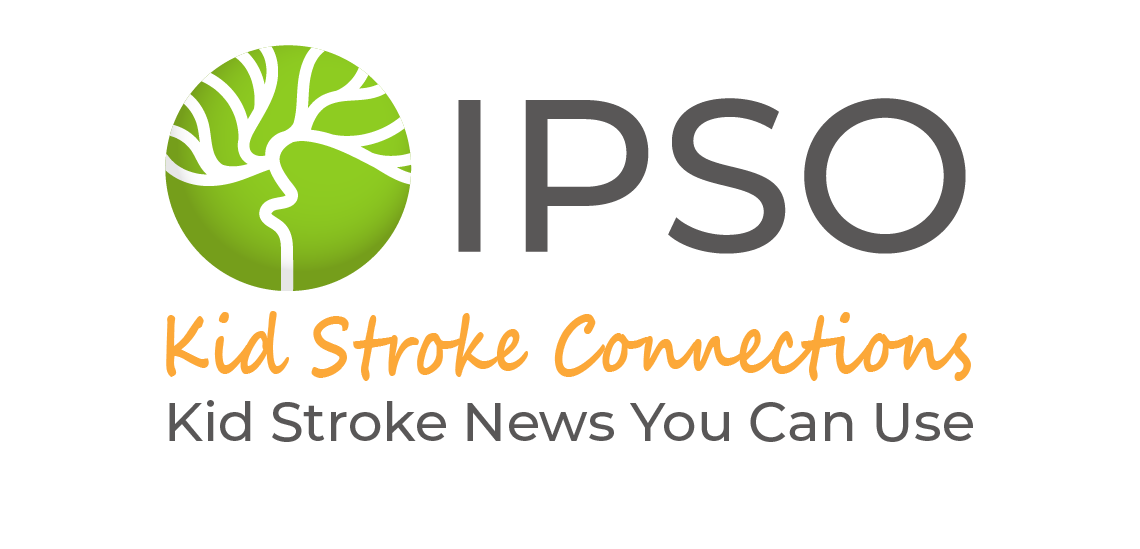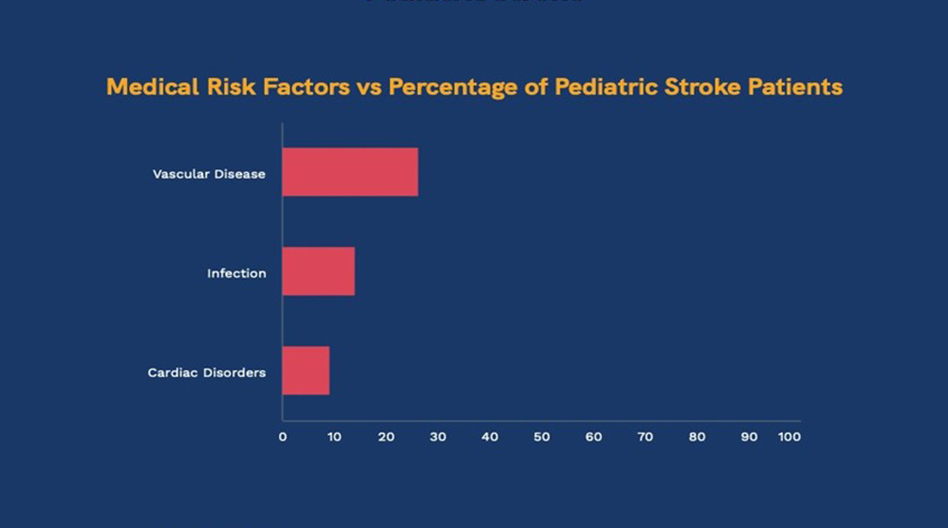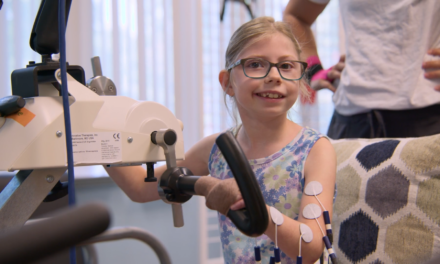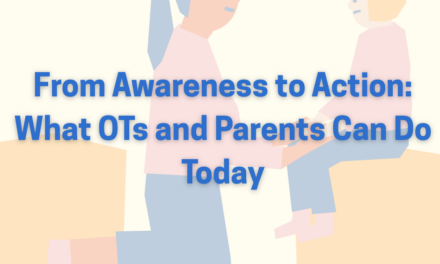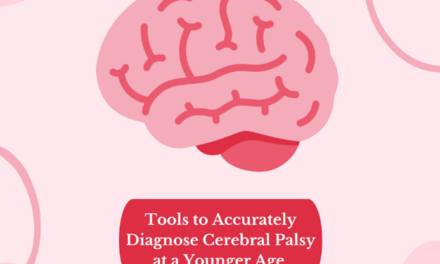Stroke, generally known as an injury to part of the brain, is considered to be an significant cause of death and long-term health problems in children. This study looked at how often kids in Taiwan have strokes and what puts them at risk. Please note, the data only represents one country over 1 year timespan. A total of 685 Taiwanese children, aged 1 month to 18 years, who were registered in the National Health Insurance Research Database and diagnosed with a stroke between 2010 and 2011, participated in this study. Stroke due to bleeding in the brain was reported as more likely to be fatal than stroke from blockage of blood flow into the brain.
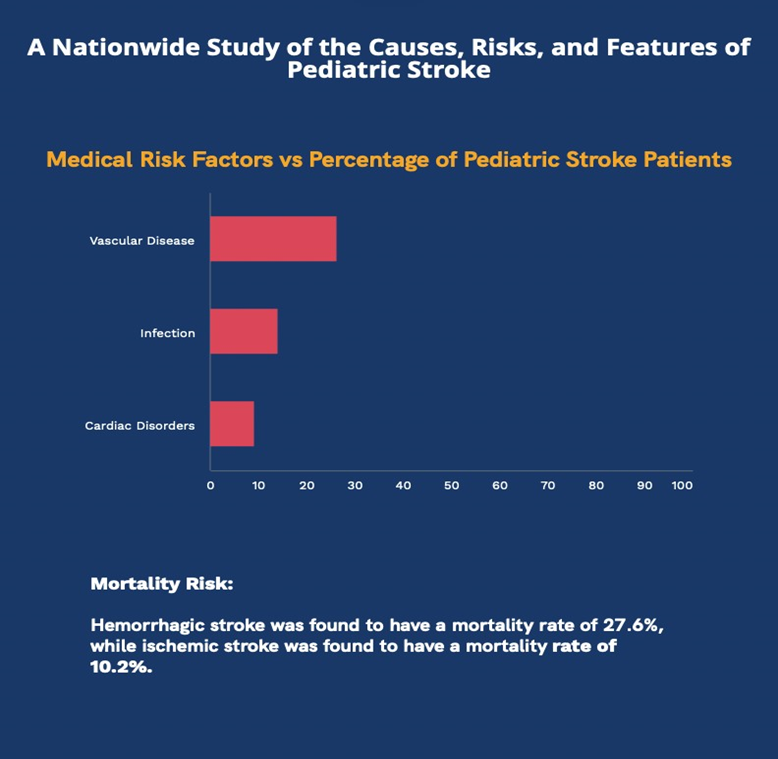
Stroke risk factors and underlying diseases were present in more than three third of patients with common risk factors including vascular diseases, infection, and heart disorders.
Moreover, this study reported that infants younger than 2 years, boys, and children from lower socioeconomic status backgrounds have a much higher risk of stroke.
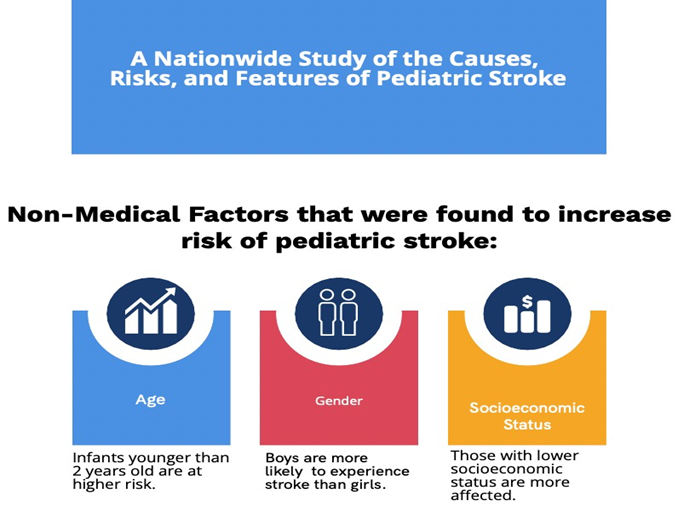
Reference:
Chiang KL, Cheng CY. Epidemiology, risk factors and characteristics of pediatric stroke: a nationwide population-based study. QJM. 2018 Jul 1;111(7):445-454. doi: 10.1093/qjmed/hcy066. PMID: 29648667.
Abstract Translation: Ingrid Votruba
Graphics: Ingrid Votruba
Medical Editor: Akshat Pai, PhD Trainee
Junior Editor: Christine Zhang
Differences in Pediatric Stroke in North India Compared to Developed Countries
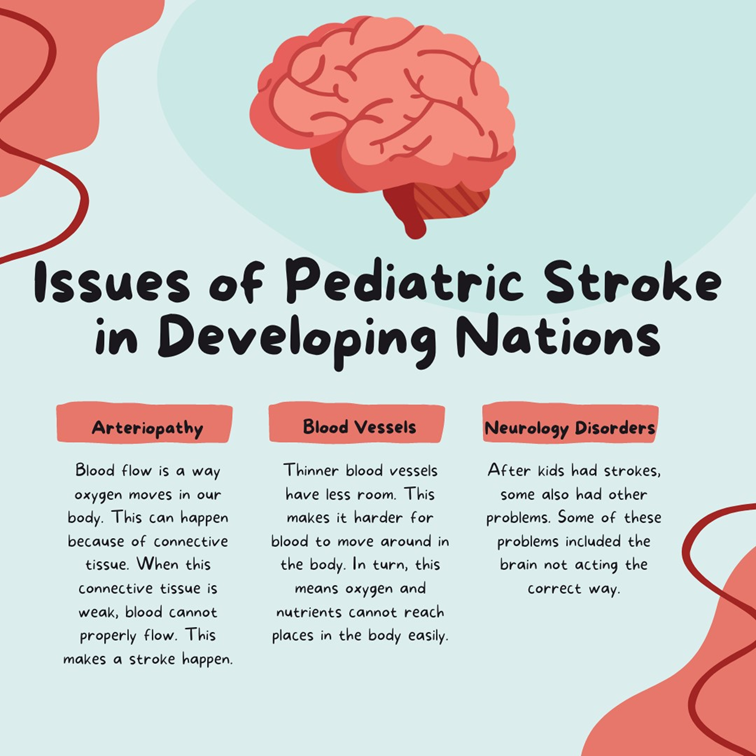
The Etiologic Profile of Childhood Stroke from North India study aimed to understand stroke risk factors in children from North India and their resulting symptoms. 76 children between post-neonatal (more than 28 weeks postnatal age) till the age of 12 years who had arterial ischemic stroke (blockage of an artery that is bringing blood to part of the brain) were studied. The researchers used a system called the established risk factor classification system which helped find the most common arterial ischemic stroke risk factor. Arteriopathy, one of the main risk factors, occurs when a stroke is caused from an artery blockage that limits blood flow to the brain. This leads to organs being unable to fully form. In addition, the study also examined short-term neurological outcomes at 3 months. They found that two-thirds of Pediatric stroke survivors also experienced sensory-motor deficits and about 1 in 3 had severe neurologic disability. More serious brain impairments were more likely to occur in children who developed a fever, infection, or seizures after having a stroke. These findings illustrate the differences in pediatric arterial ischemic stroke risk factors between developing and developed countries.
Citation: Sood, A., Suthar, R., Sahu, J. K., K Baranwal, A., Saini, A. G., Saini, L., Vyas, S., Khandelwal,
N., & Sankhyan, N. (2021). Etiologic Profile of Childhood Stroke from North India: Is It Different from Developed World?. Journal of child neurology, 36(8), 655–663.
Abstract Translation: Yashila Suresh
Graphics: Fiona Sahoo
Medical Editor: Akshat Pai, PhD Trainee
Junior Editor: Ingrid Votruba
Risk Factors in Stroke Development of Children in Germany
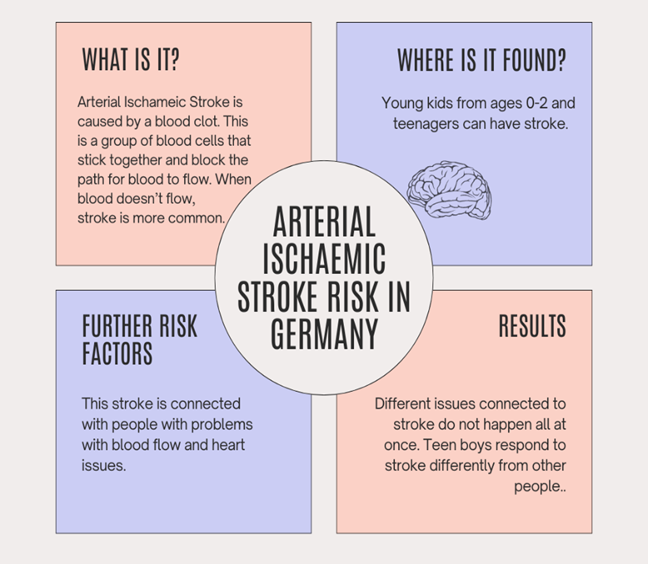 Stroke relapse and prevention treatment is unique to each child. The Risk Factors in Childhood Arterial Ischaemic Stroke study was designed to identify similarities in risk factors in pediatric stroke. The study focused on 99 children in Germany between the ages of >28days and <18 years with an acute arterial ischaemic stroke occurring between January 2015 and December 2016. 56 of the children were male and the study found that of the male participants, those who were adolescents–aged 12 or older–were at a higher risk for stroke. Overall, arterial ischaemic stroke, which happens when an artery blockage limits blood flow to the brain, was common in children who were less than 2 years old and adolescents. Other risk factors included children who formed more blood clots, had cardiac issues, and other disorders that resulted in decreased blood flow throughout the body. Though the study could not find a clear pattern in stroke risk factor similarities, they found that stroke affects adolescent males differently than other pediatric groups. In addition, they found that most risk factors for stroke occur on their own rather than at the same time as other risk factors.
Stroke relapse and prevention treatment is unique to each child. The Risk Factors in Childhood Arterial Ischaemic Stroke study was designed to identify similarities in risk factors in pediatric stroke. The study focused on 99 children in Germany between the ages of >28days and <18 years with an acute arterial ischaemic stroke occurring between January 2015 and December 2016. 56 of the children were male and the study found that of the male participants, those who were adolescents–aged 12 or older–were at a higher risk for stroke. Overall, arterial ischaemic stroke, which happens when an artery blockage limits blood flow to the brain, was common in children who were less than 2 years old and adolescents. Other risk factors included children who formed more blood clots, had cardiac issues, and other disorders that resulted in decreased blood flow throughout the body. Though the study could not find a clear pattern in stroke risk factor similarities, they found that stroke affects adolescent males differently than other pediatric groups. In addition, they found that most risk factors for stroke occur on their own rather than at the same time as other risk factors.
Citation: Gerstl, L., Weinberger, R., von Kries, R., Heinen, F., Schroeder, A. S., Bonfert, M. V., Borggraefe, I., Tacke, M., Vill, K., Landgraf, M. N., Kurnik, K., & Olivieri, M. (2018). Risk factors in childhood arterial ischaemic stroke: Findings from a population-based study in Germany. European journal of paediatric neurology : EJPN : official journal of the European Paediatric Neurology Society, 22(3), 380–386.
Abstract Translation: Yashila Suresh
Graphics: Fiona Sahoo
Medical Editor: Ilona Kopyta, MD
Junior Editor: Sanjana Sivakumar
